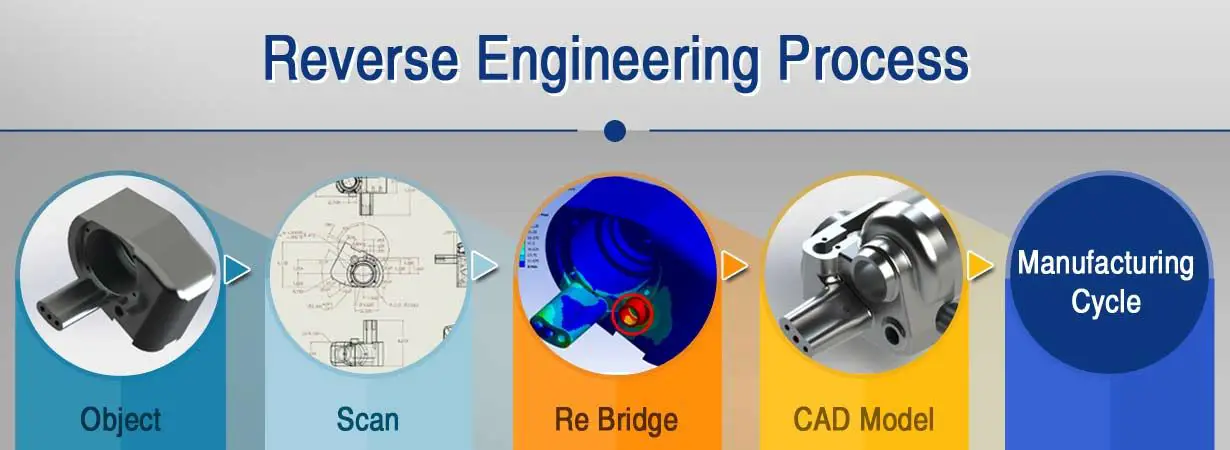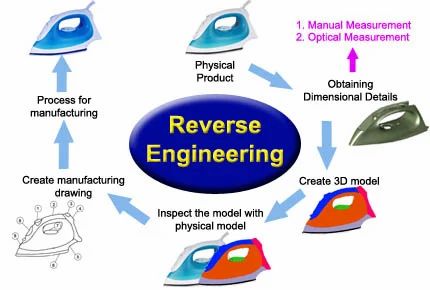Reverse Engineering and the Philosophy of Understanding Technology

Executive Summary

Reverse engineering is a powerful technique for understanding technology by breaking it down into its component parts and analyzing how they work. It can be a useful tool for troubleshooting, improving existing technologies and developing new ones. Reverse engineering can also be a philosophical exercise that can help us to understand the nature of technology itself.

Introduction
Technology is a complex and ever-changing field. New technologies are constantly being developed, and existing technologies are constantly being improved. This can make it difficult for people to keep up with the latest developments. Reverse engineering is a process that can help us to understand how technologies work and how they can be improved.
Subtopics
1. The Scientific Method:
The scientific method is a systematic approach to investigating and understanding the world. It consists of making observations, forming hypotheses, testing hypotheses, and drawing conclusions. Reverse engineering is similar to the scientific method in the sense that it involves taking something apart in order to understand how it works.
- Hypothesis Generation: The ability to make educated guesses or hypothesis about the principles behind a technology’s functionality and how the different components might interact.
- Experimental Setup: This includes establishing suitable conditions, selecting appropriate equipment, and controlling variables to accurately mimic real-world scenarios.
- Data Collection: Data gathering plays a crucial role, requiring meticulous extraction of information from the device or system you’re analyzing.
- Forming Conclusions: After careful data analysis, conclusions can be made regarding both performance and limitations of a technology.
2. Black Box vs. White Box:
A black box is a system whose internal workings are unknown and can only be understood by observing its inputs and outputs. A white box is a system whose internal workings are completely known, so that it can be modified or repaired. Reverse engineering can be used to turn a black box into a white box by systematically reverse-engineering its components and figuring out how they work.
- Understanding Externals: Black box approaches mainly focus on examining a device’s external behavior, function, and specifications without delving into underlying mechanisms.
- Comprehending Internals: White box approaches delve into the inner workings of a technology, analyzing its components, structure, and how they interact.
- Reverse-Engineering Pathways: Through careful analysis and deconstruction, black box technologies can be transformed into white box entities, shedding light on previously hidden intricacies.
3. Ethical Considerations:
Reverse engineering can be a powerful tool, but it can also be used for malicious purposes. Technologies can be reverse engineered to create knock-offs or to exploit security vulnerabilities. Reverse engineering can also be used to violate copyright laws or to steal trade secrets. It is important to use reverse engineering ethically and responsibly.
- Intellectual Property Rights: Respecting patents, copyrights, trademarks, and other intellectual property rights is paramount in preventing infringement and safeguarding innovation.
- Open Source Software: Adhering to the principles and guidelines of open-source software ensures that modifications and improvements can be shared for the collective benefit of the community.
- Malicious Intent: Recognizing and addressing potential security risks and vulnerabilities through reverse engineering can contribute to a safer ecosystem.
4. Documentation and Communication:
Reverse engineering often involves working with complex technologies and systems. It is important to document the process carefully and communicate the results clearly. This will help to ensure that the knowledge gained from reverse engineering can be used to improve existing technologies or develop new ones.
- Detailed Records: Maintaining thorough and accurate records of the steps taken during reverse engineering aids in replicating processes and improving methodologies for future endeavors.
- Clear Communication: Effectively conveying the outcomes of reverse engineering efforts through reports, presentations, or publications ensures that the insights gained can be shared and applied.
- Collaborative Effort: Foster collaboration and knowledge sharing among individuals and teams engaged in reverse engineering to maximize collective learning and progress.
5. Philosophical Implications:
Reverse engineering can also be a philosophical exercise that can help us to understand the nature of technology itself. By taking technologies apart and analyzing how they work, we can gain a better understanding of the principles that underlie them. This can help us to design new technologies that are more efficient, more sustainable, and more user-friendly.
- Examining Assumptions: Reverse engineering challenges our preconceived notions about technologies, prompting us to reassess their underlying principles and limitations.
- Appreciation for Complexity: Breaking down technologies into their fundamental components fosters an appreciation for the intricate interplay of systems and processes that bring about desired outcomes.
- Creativity and Innovation: Reverse engineering stimulates innovation by encouraging engineers and designers to explore alternative approaches and methodologies.
Conclusion
Reverse engineering is a powerful tool that can be used to understand technology, improve existing technologies, and develop new technologies. It can also be a philosophical exercise that can help us to understand the nature of technology itself. Reverse engineering is a valuable tool for anyone who wants to understand technology and use it to improve the world.
Keyword Phrase Tags
- Reverse engineering
- Technology
- Philosophy
- Scientific method
- Black box


This article provides a very clear and concise overview of reverse engineering and its role in understanding technology. The examples are helpful in illustrating the concepts, and the overall tone is informative and engaging.
I’m not sure I agree with the author’s claim that reverse engineering is the most important way to understand technology. I think there are other methods, such as experimentation and observation, that can be just as effective.
I’m interested in learning more about reverse engineering. Can anyone recommend any good resources?
I disagree with the author’s claim that reverse engineering is a necessary skill for all engineers. I think it’s a valuable skill, but it’s not essential for everyone.
Ironic that the article about understanding technology is so hard to understand.
Great article! Now I can finally understand how to build my own nuclear reactor in my basement.
Reverse engineering is like a puzzle, but instead of putting the pieces together, you’re taking them apart. It’s a lot of fun!
I think the author raises some important questions about the role of technology in our lives. Reverse engineering can be a powerful tool for understanding how technology works, but it’s important to remember that technology is not always a force for good.